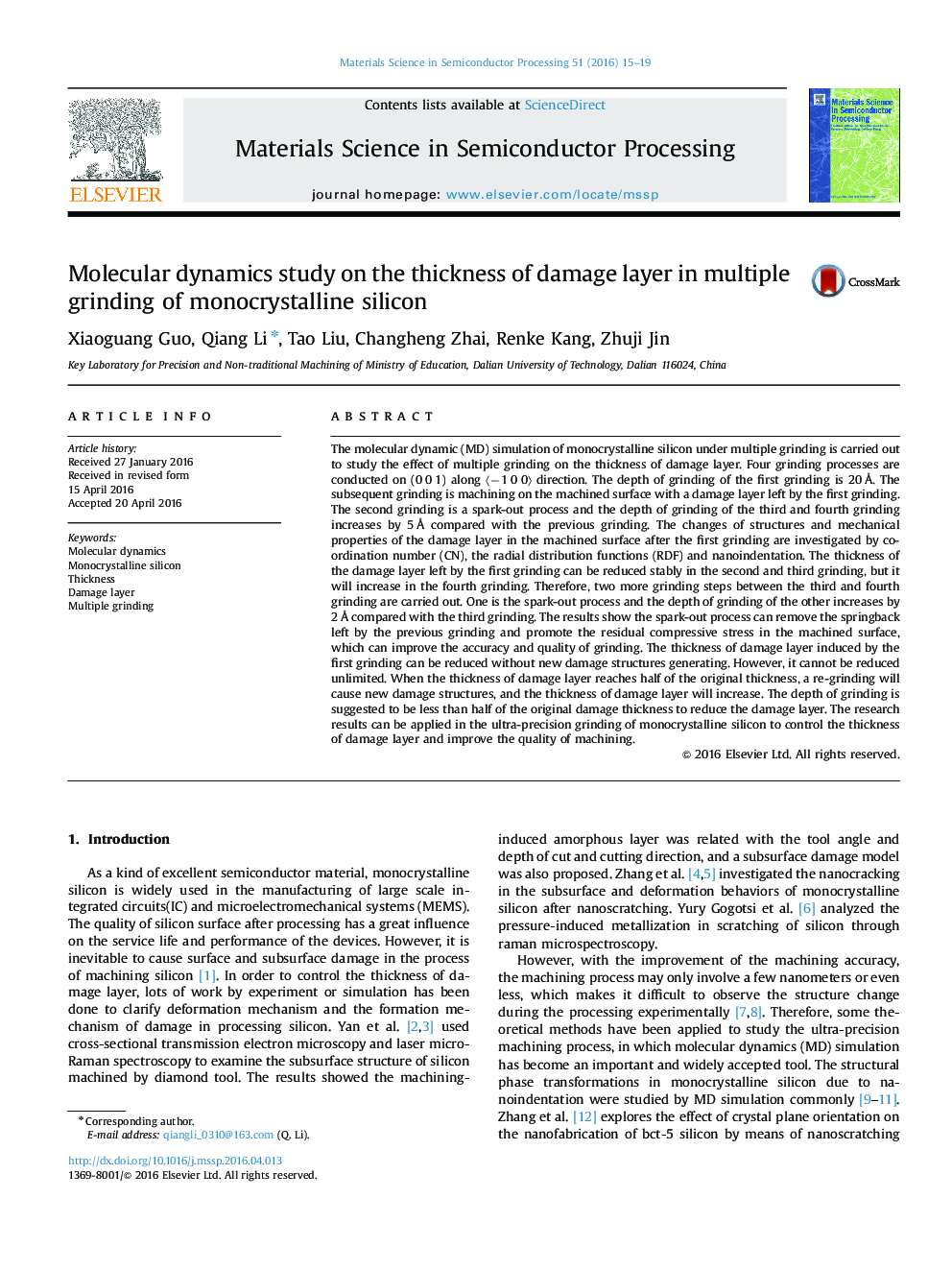| Article ID | Journal | Published Year | Pages | File Type |
|---|---|---|---|---|
| 7118516 | Materials Science in Semiconductor Processing | 2016 | 5 Pages |
Abstract
The molecular dynamic (MD) simulation of monocrystalline silicon under multiple grinding is carried out to study the effect of multiple grinding on the thickness of damage layer. Four grinding processes are conducted on (0Â 0Â 1) along ãâ1Â 0Â 0ã direction. The depth of grinding of the first grinding is 20Â Ã
. The subsequent grinding is machining on the machined surface with a damage layer left by the first grinding. The second grinding is a spark-out process and the depth of grinding of the third and fourth grinding increases by 5Â Ã
compared with the previous grinding. The changes of structures and mechanical properties of the damage layer in the machined surface after the first grinding are investigated by coordination number (CN), the radial distribution functions (RDF) and nanoindentation. The thickness of the damage layer left by the first grinding can be reduced stably in the second and third grinding, but it will increase in the fourth grinding. Therefore, two more grinding steps between the third and fourth grinding are carried out. One is the spark-out process and the depth of grinding of the other increases by 2Â Ã
compared with the third grinding. The results show the spark-out process can remove the springback left by the previous grinding and promote the residual compressive stress in the machined surface, which can improve the accuracy and quality of grinding. The thickness of damage layer induced by the first grinding can be reduced without new damage structures generating. However, it cannot be reduced unlimited. When the thickness of damage layer reaches half of the original thickness, a re-grinding will cause new damage structures, and the thickness of damage layer will increase. The depth of grinding is suggested to be less than half of the original damage thickness to reduce the damage layer. The research results can be applied in the ultra-precision grinding of monocrystalline silicon to control the thickness of damage layer and improve the quality of machining.
Related Topics
Physical Sciences and Engineering
Engineering
Electrical and Electronic Engineering
Authors
Xiaoguang Guo, Qiang Li, Tao Liu, Changheng Zhai, Renke Kang, Zhuji Jin,
